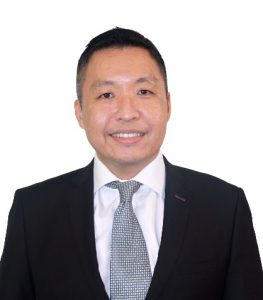
|
· Three special purpose acquisition companies (SPACs) will be launched on the SGX – Vertex Technology Acquisition Corp. (VTAC), Pegasus Asia (PA) and Novo Tellus Alpha Acquisition (NTAA, pending). · The IPO offers are an attractive free lunch for investors. SPAC shares are 100% redeemable at S$5 offer price with free warrants thrown in with the shares. The public or retail offer is only 1.5 – 2.0% of the total issued shares. · Apart from SPAC-ulating on the newsflow, we are cautious on SPACs post-IPO until valuations and ownership structures of the target company are determined. |
|
Comments 1. Non-IPO investors at a disadvantage: IPO investors in SPACs are essentially buying zero coupon capital-guaranteed bonds with free warrants (or convertible bonds). Put in simple terms, they can get back all their IPO subscription money (i.e. S$5 per unit) and yet enjoy free warrants. The opportunity cost is theoretically interest income foregone on a 2-year fixed deposit. Investors buying into the SPACs post-IPOs will be immediately disadvantaged even if they purchase at the initial issue price of S$5. The free warrants lower the cost for IPO investors. 2. Wait for the acquisition. We would prefer to wait until details of the target company are disclosed before deciding on investing in a SPAC. Investors must monitor both the valuations and shareholding structures. Valuations for the target company may be priced to perfection, or at best fairly valued. The target company will likely be issued shares in the SPAC in exchange for the acquisition. This may create a large share overhang if there is an insufficient lock-up period. 3. VTAC’s structure stands out. Among the three SPACs, the VTAC structure stands out: i. Larger in size. VTAC has raised a larger cash sum of S$200mn. The other two SPACs are S$150mn respectively. A larger cash hoard should enable the SPAC to acquire a much larger and hopefully more attractive technology target company since scale is a competitive advantage. ii. Fewer warrants. VTAC units come with a 0.3 warrants each. The remaining 0.2 warrants are issued to shareholders that vote for the acquisition. The other two SPACs provide 0.5 warrant each, a much larger “free ride”. iii. Time and price-based vesting (or lock-up) of promote shares. 49% of the sponsor promote shares can be exercised only 12 months after the acquisition. The remaining 51% of the promote shares vest only (or can be disposed of ) at S$6.0 (17%*), $7.0 (17%) and $8.0 (17%). PA has price vesting at S$5.75 (25%) and S$6.50 (25%). NTAA has no price vesting. *refers to the proportion of total founder shares.
|
|
Salient points · At the point of listing, the SPACs will issue units. Each unit is entitled to one share and 0.3 warrants (VTAC) or 0.5 warrants (PA/NTAA). Both shares and warrants are separated for trading from the 45th day of listing. · Sponsor promote (or founder) Class B shares is the virtually free equity given to the sponsor as compensation for completing the acquisition. · Investors can redeem the $5 per share for cash if the acquisition (or business combination) is completed or after 24 months. Ironically, they can vote for the acquisition and still redeem their shares. |
At-risk capital is used to fund the operations, offering expenses and other costs of the SPACs. The capital is raised via private placement warrants to the sponsor. These warrants are each priced at S$0.50 (VTAC/NTAA) and S$0.02 (PA). It is not entirely clear how they were priced, but the S$0.50 is a good reference price for trading.
Important Information
This report is prepared and/or distributed by Phillip Securities Research Pte Ltd ("Phillip Securities Research"), which is a holder of a financial adviser’s licence under the Financial Advisers Act, Chapter 110 in Singapore.
By receiving or reading this report, you agree to be bound by the terms and limitations set out below. Any failure to comply with these terms and limitations may constitute a violation of law. This report has been provided to you for personal use only and shall not be reproduced, distributed or published by you in whole or in part, for any purpose. If you have received this report by mistake, please delete or destroy it, and notify the sender immediately.
The information and any analysis, forecasts, projections, expectations and opinions (collectively, the “Research”) contained in this report has been obtained from public sources which Phillip Securities Research believes to be reliable. However, Phillip Securities Research does not make any representation or warranty, express or implied that such information or Research is accurate, complete or appropriate or should be relied upon as such. Any such information or Research contained in this report is subject to change, and Phillip Securities Research shall not have any responsibility to maintain or update the information or Research made available or to supply any corrections, updates or releases in connection therewith.
Any opinions, forecasts, assumptions, estimates, valuations and prices contained in this report are as of the date indicated and are subject to change at any time without prior notice. Past performance of any product referred to in this report is not indicative of future results.
This report does not constitute, and should not be used as a substitute for, tax, legal or investment advice. This report should not be relied upon exclusively or as authoritative, without further being subject to the recipient’s own independent verification and exercise of judgment. The fact that this report has been made available constitutes neither a recommendation to enter into a particular transaction, nor a representation that any product described in this report is suitable or appropriate for the recipient. Recipients should be aware that many of the products, which may be described in this report involve significant risks and may not be suitable for all investors, and that any decision to enter into transactions involving such products should not be made, unless all such risks are understood and an independent determination has been made that such transactions would be appropriate. Any discussion of the risks contained herein with respect to any product should not be considered to be a disclosure of all risks or a complete discussion of such risks.
Nothing in this report shall be construed to be an offer or solicitation for the purchase or sale of any product. Any decision to purchase any product mentioned in this report should take into account existing public information, including any registered prospectus in respect of such product.
Phillip Securities Research, or persons associated with or connected to Phillip Securities Research, including but not limited to its officers, directors, employees or persons involved in the issuance of this report, may provide an array of financial services to a large number of corporations in Singapore and worldwide, including but not limited to commercial / investment banking activities (including sponsorship, financial advisory or underwriting activities), brokerage or securities trading activities. Phillip Securities Research, or persons associated with or connected to Phillip Securities Research, including but not limited to its officers, directors, employees or persons involved in the issuance of this report, may have participated in or invested in transactions with the issuer(s) of the securities mentioned in this report, and may have performed services for or solicited business from such issuers. Additionally, Phillip Securities Research, or persons associated with or connected to Phillip Securities Research, including but not limited to its officers, directors, employees or persons involved in the issuance of this report, may have provided advice or investment services to such companies and investments or related investments, as may be mentioned in this report.
Phillip Securities Research or persons associated with or connected to Phillip Securities Research, including but not limited to its officers, directors, employees or persons involved in the issuance of this report may, from time to time maintain a long or short position in securities referred to herein, or in related futures or options, purchase or sell, make a market in, or engage in any other transaction involving such securities, and earn brokerage or other compensation in respect of the foregoing. Investments will be denominated in various currencies including US dollars and Euro and thus will be subject to any fluctuation in exchange rates between US dollars and Euro or foreign currencies and the currency of your own jurisdiction. Such fluctuations may have an adverse effect on the value, price or income return of the investment.
To the extent permitted by law, Phillip Securities Research, or persons associated with or connected to Phillip Securities Research, including but not limited to its officers, directors, employees or persons involved in the issuance of this report, may at any time engage in any of the above activities as set out above or otherwise hold an interest, whether material or not, in respect of companies and investments or related investments, which may be mentioned in this report. Accordingly, information may be available to Phillip Securities Research, or persons associated with or connected to Phillip Securities Research, including but not limited to its officers, directors, employees or persons involved in the issuance of this report, which is not reflected in this report, and Phillip Securities Research, or persons associated with or connected to Phillip Securities Research, including but not limited to its officers, directors, employees or persons involved in the issuance of this report, may, to the extent permitted by law, have acted upon or used the information prior to or immediately following its publication. Phillip Securities Research, or persons associated with or connected to Phillip Securities Research, including but not limited its officers, directors, employees or persons involved in the issuance of this report, may have issued other material that is inconsistent with, or reach different conclusions from, the contents of this report.
The information, tools and material presented herein are not directed, intended for distribution to or use by, any person or entity in any jurisdiction or country where such distribution, publication, availability or use would be contrary to the applicable law or regulation or which would subject Phillip Securities Research to any registration or licensing or other requirement, or penalty for contravention of such requirements within such jurisdiction.
This report is intended for general circulation only and does not take into account the specific investment objectives, financial situation or particular needs of any particular person. The products mentioned in this report may not be suitable for all investors and a person receiving or reading this report should seek advice from a professional and financial adviser regarding the legal, business, financial, tax and other aspects including the suitability of such products, taking into account the specific investment objectives, financial situation or particular needs of that person, before making a commitment to invest in any of such products.
This report is not intended for distribution, publication to or use by any person in any jurisdiction outside of Singapore or any other jurisdiction as Phillip Securities Research may determine in its absolute discretion.
IMPORTANT DISCLOSURES FOR INCLUDED RESEARCH ANALYSES OR REPORTS OF FOREIGN RESEARCH HOUSE
Where the report contains research analyses or reports from a foreign research house, please note:

Paul has 20 years of experience as a fund manager and sell-side analyst. During his time as fund manager, he has managed multiple funds and mandates including capital guaranteed, dividend income, renewable energy, single country and regionally focused funds.
He graduated from Monash University and had completed both his Chartered Financial Analyst and Australian CPA programme.